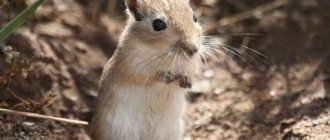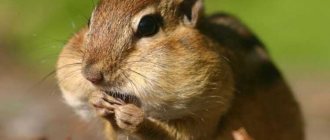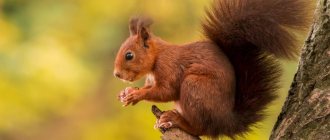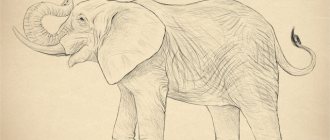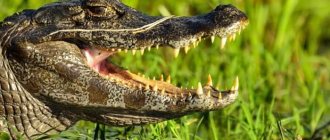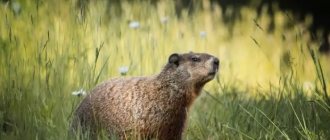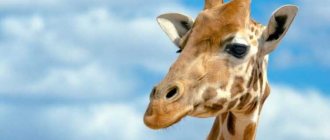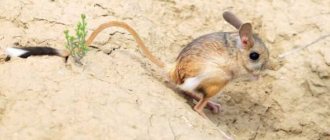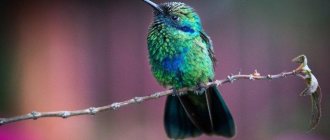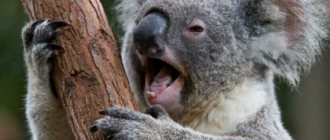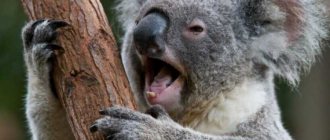Back in the days of Ancient Rome, there was a legend that the porcupine was capable of throwing its quills at enemies like arrows, and also that they were poisonous. In fact, neither one nor the other is true. The porcupine can quickly insert the quills and recoil, or lose them during sudden movements. And the pain and difficulty in healing wounds left by a porcupine is explained by the presence of dust, dirt and sand on the quills, which causes them to become infected.
Description of the rodent
— Advertising —
The body length of the porcupine is 38-90 cm. Weight is from 2-3 kg to 27 kg. There are needles on the back, sides and tail. The color is brown, and the needles are striped, black and white. Porcupine quills are the longest among mammals, and by origin they are modified hair. They reach 40 cm in length, 7 mm in diameter, and are very sharp. The “hair” of a porcupine consists of soft fur-like hairs, hard, flat bristles, long and elastic bristles, and hard and long quills.
Feeding features of the porcupine
The porcupine is a herbivore. In summer and spring, it feeds on green parts of plants, roots, bulbs and tubers. In the fall, he switches to a diet consisting of watermelons, melons, cucumbers, pumpkins, grapes, and alfalfa. In winter, it eats a lot of tree bark, gnawing the bottom of trunks for this purpose. Very rarely it can add insects to its diet.
Importance to the ecosystem
Some people consider porcupines to be pests, but they are actually beneficial. One of their favorite foods is dwarf mistletoe, a parasitic seed plant. Dwarf mistletoe causes stunted growth of conifers, decreased wood quality, and sometimes tree death. As porcupines eat the plant, they help reduce its population, thereby improving the quality of the wood.
Porcupines also perform other constructive tasks in forestry, thinning overgrown stands and reducing the number of weeds. By exposing the sapwood of trees to insect attack, they create snags that provide shelter and nesting sites for many species of wildlife. Additionally, excess food that falls to the ground when a porcupine feeds creates a food source for deer and other small mammals.
Common Porcupine Species
African porcupine (Hystrix africaeaustralis)
Also known as crested or crested, it lives in Africa and Italy. Body length reaches 0.7 m, weight exceeds 20 kg. The body is squat, the paws are thick. There are dark bristles on the chest, sides and legs, all other parts of the body are covered with sharp long needles of black and white color.
Malayan porcupine (Acanthion brachyura)
Large species with sharp, hard needles. The needles are painted black and white or yellow, with wool located between them. The paws are short and covered with brown hairs. Body length 63-73 cm, tail length 6-11 cm. Body weight from 700 to 2400 g.
The species is found in Nepal, northeastern India, central and southern China, Myanmar, Thailand, Laos, Cambodia and Vietnam, peninsular Malaysia, Singapore, Sumatra and Borneo.
Crested porcupine (Hystrix cristata)
Body weight reaches 27 kg, with an average of 8-12 kg. Body length is about 90 cm, tail length is 10-15 cm. The body is stocky with thick spines of varying lengths. The needles are dark or black-brown to white, sharp. Between the needles there are hard bristly hairs. There is a hard ridge on the head. The bottom of the body is covered with dark brown hairs. The muzzle is blunt and rounded, dark, without spines. The eyes are round, small. The ears are small. The legs are short.
The species is distributed in southern Europe, Asia Minor, the Middle East, Iraq, Iran, southern China, India and Ceylon.
Indian porcupine (Hystrix indica)
Body weight reaches 15 kg. The species is found in India and southern Asia from eastern Transcaucasia and Kazakhstan to the countries of southeast Asia, where it lives in deserts, savannas, forests, and mountains.
Javan porcupine (Hystrix javanica)
The species is endemic to Indonesia and is found in Java, Bali, Sumbawa, Flores, Lombok and Madura.
Stiff-spined porcupine (Thecurus crassispinis)
A resident of the island of Kalimantan, where he lives both in forests and on agricultural land, and even in cities.
Sumatran porcupine (Thecurus sumatrae)
Body length is 45-56 cm. Tail length is 2.5-19 cm. Weight is 3.8-5.4 kg. The body is covered with hollow needles, sharp flat needles and stiff bristles up to 16 cm long. The color is generally dark brown, the needles have white tips. On the bottom of the neck there are dirty white spots. There is no comb.
Distributed on the island of Sumatra at an altitude of up to 300 m above sea level, in forests, rocky heaths, and cultural plantings.
Long-tailed porcupine (Trichys fasciculata)
Body length is 35-48 cm, tail length 18-23 cm, body weight 1.75-2.25 kg. The fur is brown on top and whitish below. The body surface is covered with flexible spines of moderate length. The tail is brown, scaly, and comes off easily, especially in females.
It lives on the Malay Peninsula, on the islands of Borneo and Sumatra, in forests and cultivated plantings.
Area
The porcupine is found in Southern Europe (mainland Italy and Sicily), Asia Minor, almost everywhere in the Middle East, Iraq, Iran and further east to southern China. It is found almost throughout India and Ceylon, as well as in certain areas of Southeast Asia. Individual spots of its range cover the south and west of the Arabian Peninsula. In the territory of the former USSR, the porcupine can be found in the south of Central Asia and Transcaucasia. The porcupine population, although it has declined over recent decades due to habitat destruction, remains quite high. In general, this species can still be considered out of threat. According to the International Red Book, the porcupine has been assigned the status of a species “at low risk” (LC – Least Concern; this is the lowest category of danger).
Porcupine behavior
Porcupines live on the ground, sometimes digging underground passages, or hiding in rock crevices or using abandoned burrows of other species. These animals are nocturnal. During the day they sit in their burrows and shelters, and at dusk they come out. During the night, the porcupine travels several kilometers, and along the way eats roots, plants, tubers, bark and insects. In winter, porcupines rarely leave the burrows in which they build a nest.
Porcupines often live close to people to feast on the harvest from agricultural plantations. In search of food, animals sometimes even gnaw through thick bars blocking the entrance.
Nora
Porcupine is a nocturnal animal. During daylight hours, he usually hides in caves, rocky crevices, in dens abandoned by other representatives of the fauna, or in holes dug himself. The length of the porcupine's shelter is approximately 10 m, and the depth can reach 4 meters. The burrow has several rooms (rooms), among which one “room” is necessarily lined with fresh grass.
These animals do not hibernate, but their activity decreases at this time of year. They spend most of their time in their home.
Porcupine Reproduction
Porcupines are monogamous animals and choose one partner for life. They live in families in caves or burrows up to 20 m in length. Here, porcupines build a soft grass nest for future offspring.
Mating occurs in early spring. Pregnancy lasts 110-112 days, in one litter there are 2-5 babies. Porcupine cubs are born sighted, with delicate light fluff instead of quills. By the end of the first month of life they become adults.
Lifespan
The life of a porcupine in captivity increases several times. In the wild, animals live up to 10 years.
- Detailed description with photos of all animals included in the Red Book of Russia
Zebra - habitats, appearance, diet and behavior, life cycle + 94 photos
Leopard - habitats, life cycle, rutting season and lifespan + 118 photos
Natural enemies
The porcupine has few natural enemies, as its quills provide excellent protection even from tigers and leopards. When attacking a porcupine, it first warns the predator: it begins to quickly stomp its hind legs, shake its quills and make a loud cracking sound. If the pursuer does not leave, then the porcupine quickly rushes at him and stabs him with quills.
Thanks to this protection, the porcupine is not afraid of large animals and does not even give way to cars, trying to threaten them with quills.
Porcupine quill wounds are one of the main reasons why tigers and leopards in Africa and India begin to hunt people. Having received a couple of dozen needles in the face and paws, the animal becomes unable to hunt ungulates and attacks humans.
Interaction with other animals
The crested porcupine lives alone. Sociability is unusual for this type of animal. They gather in groups only for the duration of mating, after which they immediately disperse to their burrows. Porcupines practically do not interact with each other, they do not have games and other entertainment, any little thing can cause a conflict between porcupines. They also avoid other animals. They cannot be called stupid, but the character of these animals is quite bad. They are grouchy, distrustful, cowardly and fearful. Their memory and intelligence are undeveloped. In case of any, even minor, danger, animals try to protect themselves. They never use their sharp spines, strong teeth and claws to attack. They need all these means only to intimidate and scare away the enemy. Often porcupines die under the wheels of cars, as they try to drive them away as well as their enemies.
A pair of porcupines.
Porcupine, view from the muzzle.
Interesting facts about the rodent:
- The porcupine is the second largest rodent in Europe after the beaver and the third largest after the beaver and capybara.
- Porcupines are frequent visitors to gardens, melon fields and plantations, and are considered pests that destroy watermelons and melons and dig up the ground heavily. Even wire mesh does not save you from their attacks. In addition, these animals bite through the hoses of irrigation systems in search of water. For these reasons, porcupines were often exterminated in the past.
- Porcupine meat tastes like rabbit meat; it is white, tender and juicy. Previously, porcupines were often hunted for food, but now such hunting is more of a sporting nature.
- Porcupines take root in captivity, get used to it well and even reproduce. Their lifespan is about 20 years.
Lifespan
Both families of porcupines include some of the longest-lived rodents known to science. The North American porcupine can live 23 years, while its South American prehensile-tailed cousin can live four years longer. At least three species of Old World porcupines have a maximum lifespan of 27 to 28 years. This is more than the largest rodent in the world - the capybara. However, porcupines are second to the tiny and seemingly all-powerful naked mole rat, which can live for almost 30 years.
